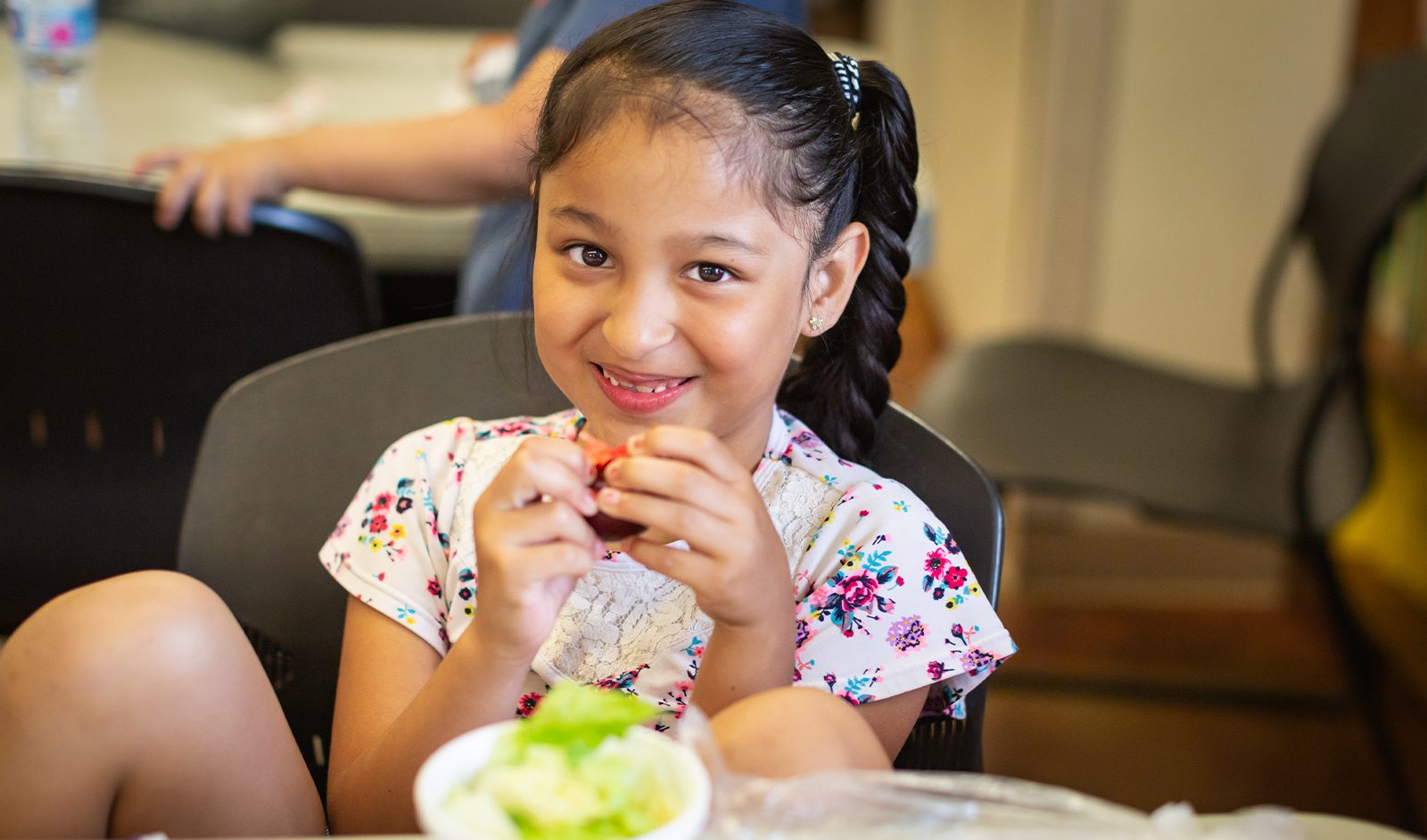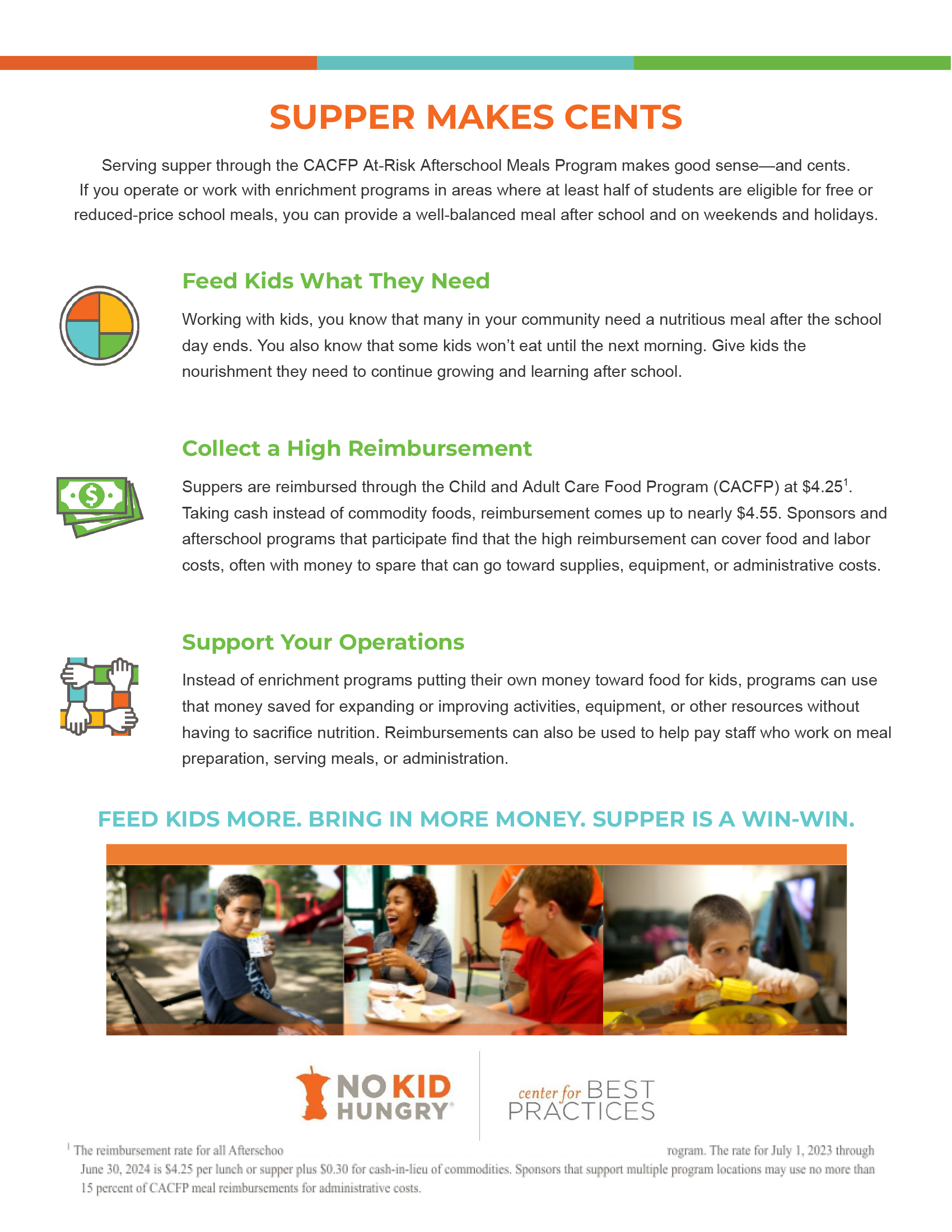
1.5 million children served healthy afterschool meals
Afterschool & Out of School Time
Over 20 million children leave school not knowing if there is supper at home or if their next meal won’t be until the next day while they are at school. Serving meals and snacks to children at-risk afterschool and out of school time doesn’t have to be hard or complicated.
Sponsoring organizations can work with a food service vendor or school food authority who will deliver meals at or near the reimbursement rate. You only need to take attendance, count meals and provide an enrichment activity.
Participation Qualifications
Are you located at a site where at least half of the children in the school attendance area are eligible for free and reduced price school meals?
Do you offer educational or enrichment activities during the school year–after the regular school day ends or on weekends or holidays?
If you do, you likely qualify for reimbursement from the USDA to serve nutritious snack and/or supper.
Perceived Barriers of Program Participation

Benefits of Participation
- Increased nutrition and decreased hunger
- Can serve meals afterschool, weekends and holidays
- Increased interest in enrichment activities
- Better focused and improved performance
- Increased revenue
Benefits of Using a Sponsor
- Decreased liability
- Increased community partnerships
- Increased flexibility (adding and dropping sites)
- Decreased administrative burden
Northern Illinois Food Bank
At-Risk Afterschool Site
The Northern Illinois Food Bank has been serving the area since 1983 when they distributed 64,000 pounds of food in their first year. Today, they serve 13 counties and work with 900 food pantries and feeding sites. Last year alone they were able to serve 850,000 snacks and suppers to over 8,000 kids per day. Through the At-Risk Afterschool and Summer Food Service Programs, they also provided more than 330,000 breakfasts, lunches, and snacks to nearly 16,000 kids every day.
"1 in 5 children in our service area are not getting the nutritious food they need. When kids don’t have what they need, emotional and learning needs suffer.”

The food bank provides the children with the food they need and expanding nutrition education that will influence their families. Chef Jenn creates recipes that are child friendly with simple preparation. They also have created a Nutrition Education Program comprised of 20 lessons, four for each of the five food groups. The lessons are only fifteen minutes, have information and activities to take home, and the children are involved with the food preparation and hands-on nutritional activities.
The food bank seeks to find where they are most needed in the area. The last few years they have increased their partnerships with libraries and community centers. They are finding that some of the children are eating one meal at school as early as 10:30 in the morning and then after school they are too hungry to focus. The food bank knows that by providing healthy food, they are able to bring the focus back to school work and enrichment programs.
In order to end chronic hunger, they are constantly trying to find potential sites to serve the community. A key to their success is flexibility and creating programs that specifically fit the need of the area. They know that it only takes one person to make a difference in a person’s life and that is what makes their work so important. “We want to make sure no one is hungry. This program can be the difference.”
In Geneva, Illinois, Northern Illinois Food Bank has been a CACFP participant through Illinois State Board of Education since 2005.

